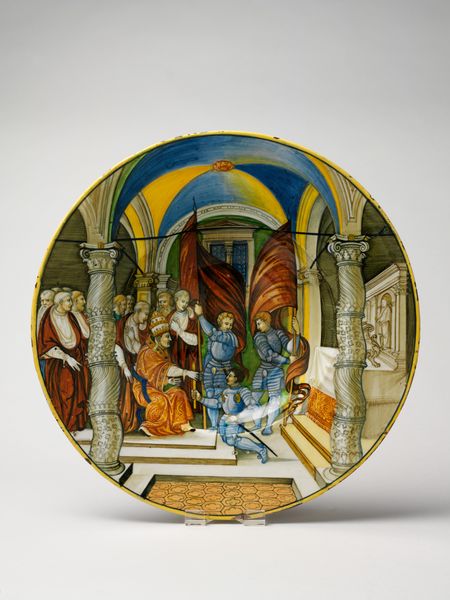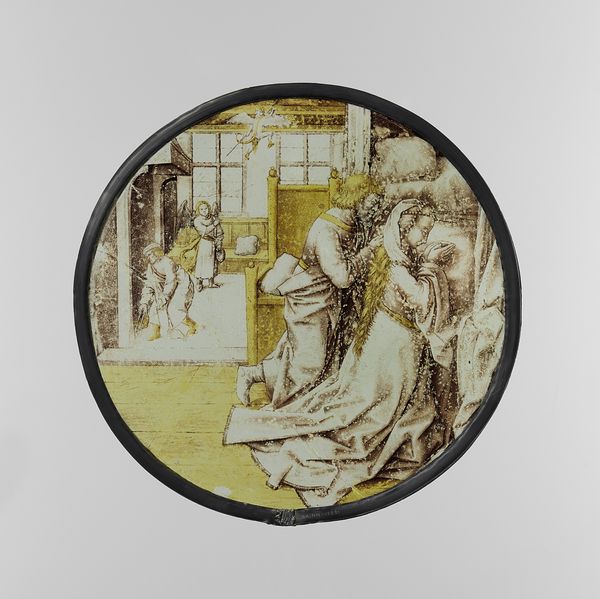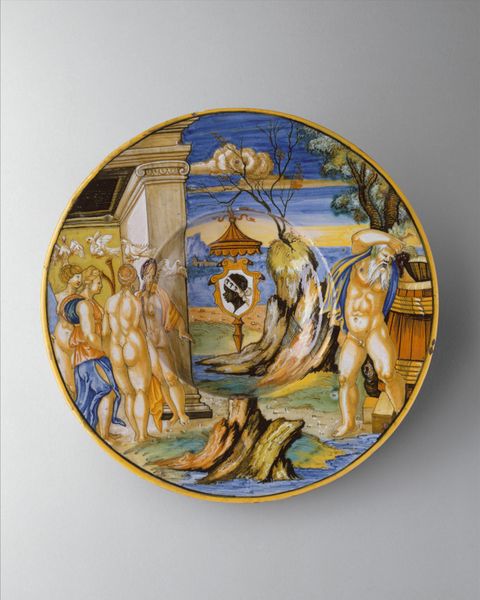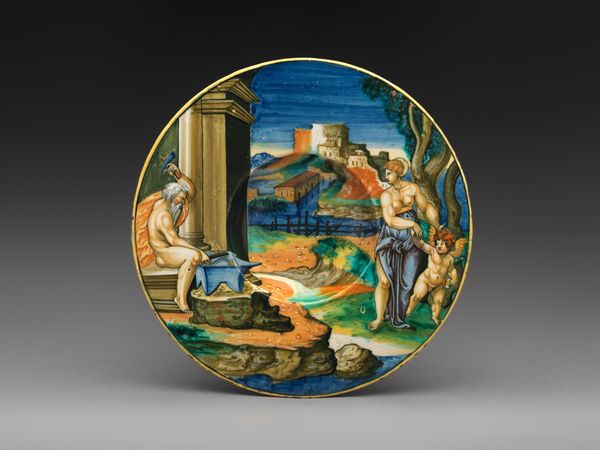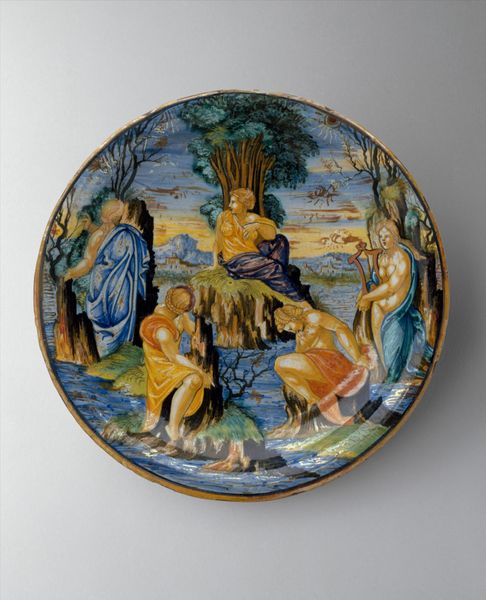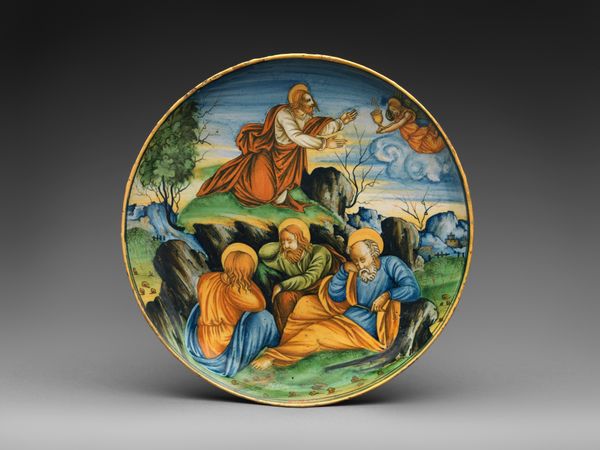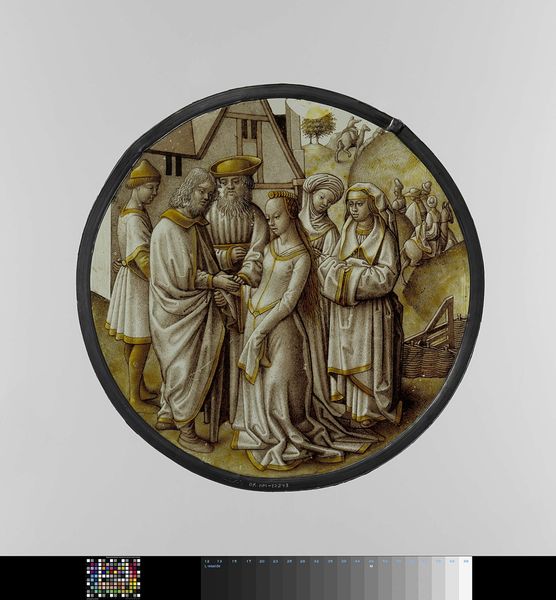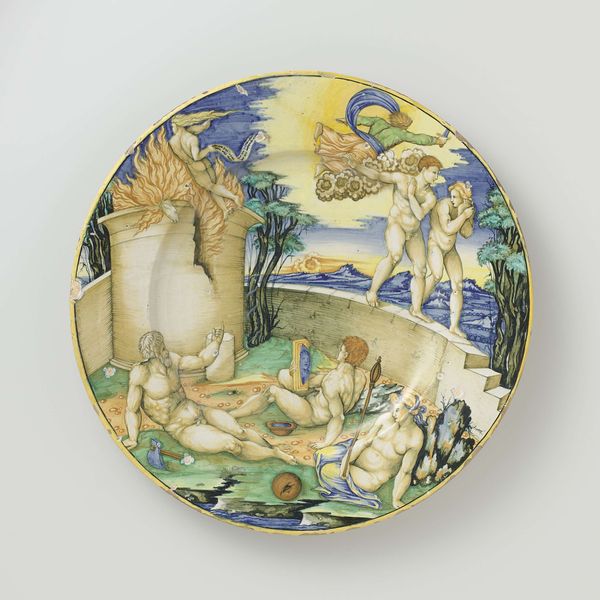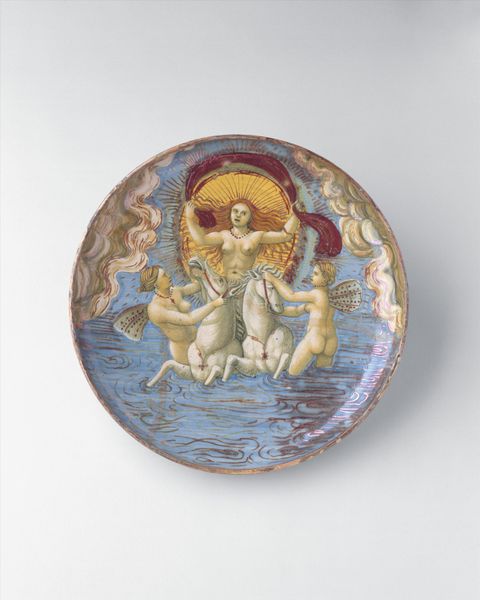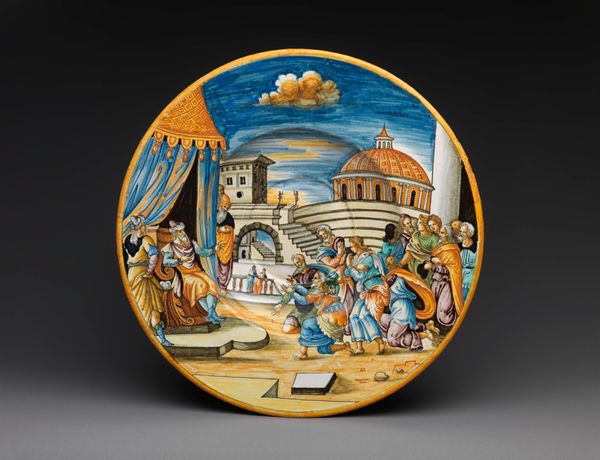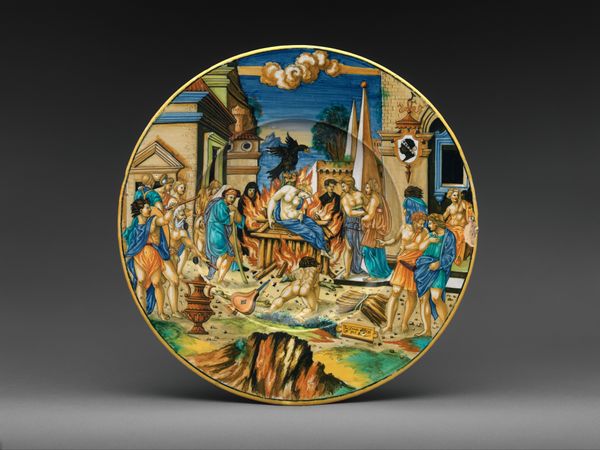
painting, ceramic
#
painting
#
ceramic
#
figuration
#
oil painting
#
ceramic
#
history-painting
#
italian-renaissance
Dimensions: height 5.0 cm, diameter 29.4 cm
Copyright: Rijks Museum: Open Domain
Curator: Here we have an anonymous Italian Renaissance dish from approximately 1570 to 1580, illustrating a biblical scene, Christ and the Woman Taken in Adultery. Editor: Immediately, I see a miniature drama unfolding, like a stage set. There's this beautiful architectural backdrop, and all the figures are so expressive, caught in a moment of intense emotion. The ceramic medium lends a surprising delicacy to such a powerful scene. Curator: Indeed, the artist has masterfully used the circular format to frame the narrative. The architecture, rendered in cool grays and blues, creates depth and perspective, guiding the viewer's eye toward the central figures: Christ, in soft pastel robes, and the woman, draped in vibrant blues and greens. This juxtaposition directs our attention to the narrative core, that of divine mercy. Editor: The whole thing feels very theatrical, and almost…personal. The artist has managed to capture these very human moments of shame, judgment, and forgiveness, all within this limited circular space. And you know, Christ's gesture, writing in the sand, it adds such a layer of ambiguity, drawing us into his thoughts. Is it dismissal, defiance, contemplation? Curator: Semiotically speaking, the empty space around Christ underscores his isolation. The gaze of the accusers, bearing down upon the woman, amplifies her vulnerability. One notices the chromatic choices reinforce the drama and underscores narrative tension—cool tones emphasizing rigid judgement against the warm, forgiving tones enveloping the Christ. Editor: It feels like I am looking at a scene caught between condemnation and redemption. Makes me reflect on all the spaces we each try to navigate between these opposites. Makes you wonder where we can write our thoughts in the sand. Curator: I agree. It’s fascinating how this functional object transcends its utilitarian purpose, offering profound reflections on human nature, power, and grace. Editor: Exactly, a visual reminder of the enduring complexity of the human condition, captured on a dish that probably adorned some Renaissance dining table.
Comments
No comments
Be the first to comment and join the conversation on the ultimate creative platform.
